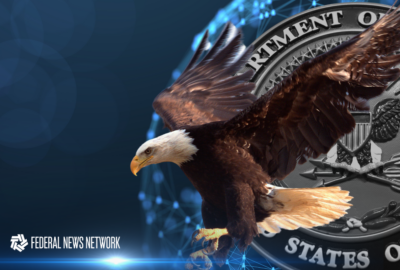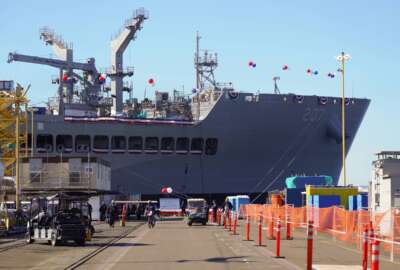Federal voting program’s objective: Make itself obsolete
Even in the 21st century, it can still be awfully tough to vote in an election if you\'re thousands of miles from your local polling place. Making sure such vot...
wfedstaff | June 4, 2015 6:32 pm
Even in the 21st century, it can still be awfully tough to vote in an election if you’re thousands of miles from your local polling place. Sure, there’s mail-in absentee balloting. But if you’re stationed, say, at a combat outpost in Afghanistan, snail mail can still take well over a month to make a round trip to you and back home.
Making sure such voters can cast ballots in federal elections is the mission of the Federal Voting Assistance Program (FVAP), a Defense Department office that offers assistance not just to military personnel, but to any U.S. citizen who needs help casting a ballot from overseas. It offers resources, including a wizard on its website that takes a voter through the entire process of registering to vote and casting a ballot in the appropriate jurisdiction.
But Robert Carey, FVAP’s director, said his office’s assistance role to state and local governments is just as important.
“We also want to build up, at the state level, the infrastructure to make much of our job unnecessary,” Carey said during an appearance on Federal News Radio’s On DoD. “The whole reason the Federal Voting Assistance Program started up was that there were these problems with local elections officials complying with federal law.”
Carey said 2009 was a watershed year in terms of election law changes designed to improve voter participation among servicemembers and overseas voters. Among other things, the Military and Overseas Voter Empowerment (MOVE) Act requires state and local elections officials to mail absentee ballots to servicemembers at least 45 days prior to an election in order to ensure a ballot can make its way to a remote location — and back to elections officials — in time to be counted.
But an FVAP survey late last year found serious compliance problems with that provision: 44 percent of local elections officials acknowledged missing the deadline in the 2010 election cycle, and an estimated 120,000 military voters never got their absentee ballots.
“In the past, people have always thought that the problem with military and overseas voting was that people just weren’t getting an adequate opportunity to register to vote,” Carey said. “We now know the opposite is true. They’re registering at very high rates — higher than the general population. But they’re just not getting their ballots.”
While FVAP wants to boost compliance with the mail requirement, Carey said an even more promising solution is electronic transmission of ballots to servicemembers. His office is encouraging local officials to use both “push” and “pull” methods — servicemembers could have their blank ballots emailed to them, or they could visit a secure website and download them at their leisure.
“Instead of taking 20-30 days for the ballot to get over there, it’s taking 20-30 milliseconds,” Carey said. “Yeah, it might only take seven to ten days to get mail to Kabul or Kuwait, but it could take 20 more to get it to that combat outpost or that ship at sea. Because if that ship is outside of the range of a cargo aircraft, it’s still not getting any mail. And if the combat outpost only has one supply convoy a week, a bag of mail weighs something. A commander sometimes has to ask, ‘Am I going to send a bag of mail, or am I going to send another soldier?’ And sometimes the bag of mail is going to lose.”
To help establish delivery of ballots, FVAP has issued $25 million in grants to 27 states to help them establish their own electronic systems for the 2012 election. Some states also let servicemembers return their ballots through online website uploads, email or fax.
Carey acknowledged that online ballot delivery — and perhaps the fully-electronic casting of ballots one day — introduce new cybersecurity risks.
“There is substantial risk in the current voting system,” he added. “If the military voter had the same voting success rate as the general population, about 200,000 more military ballots would have been cast in 2010. So the current system already has a very high risk of disenfranchisement. Those that criticize Internet voting seem to think there can be absolutely no risk. That’s not fair. Obviously we don’t want to create a system that has more risk than the current system, and that’s what we’re evaluating right now under a mandate from Congress.”
Carey said it’s unlikely that an Internet voting system at the Defense Department-level could get off the ground before 2016 or 2018. Among the issues DoD is sorting through are how to make such a system secure and how to integrate it with the IT infrastructure of the more than 7,000 local jurisdictions that actually run elections.
“Some of the attempts by DoD in the past have been to try to develop the entire voting system, soup to nuts,” he said. “But from a policy perspective, I think it’s very problematic for the Department of Defense to actually be tabulating votes. I don’t know of a single state or local election jurisdiction that would allow that, and I don’t think we should be involved in that anyway. We have civilian control of the military, and having DoD tabulate votes would be very problematic.”
RELATED STORIES:
Military voters miss out on absentee ballots
Copyright © 2024 Federal News Network. All rights reserved. This website is not intended for users located within the European Economic Area.
Jared Serbu is deputy editor of Federal News Network and reports on the Defense Department’s contracting, legislative, workforce and IT issues.
Follow @jserbuWFED






